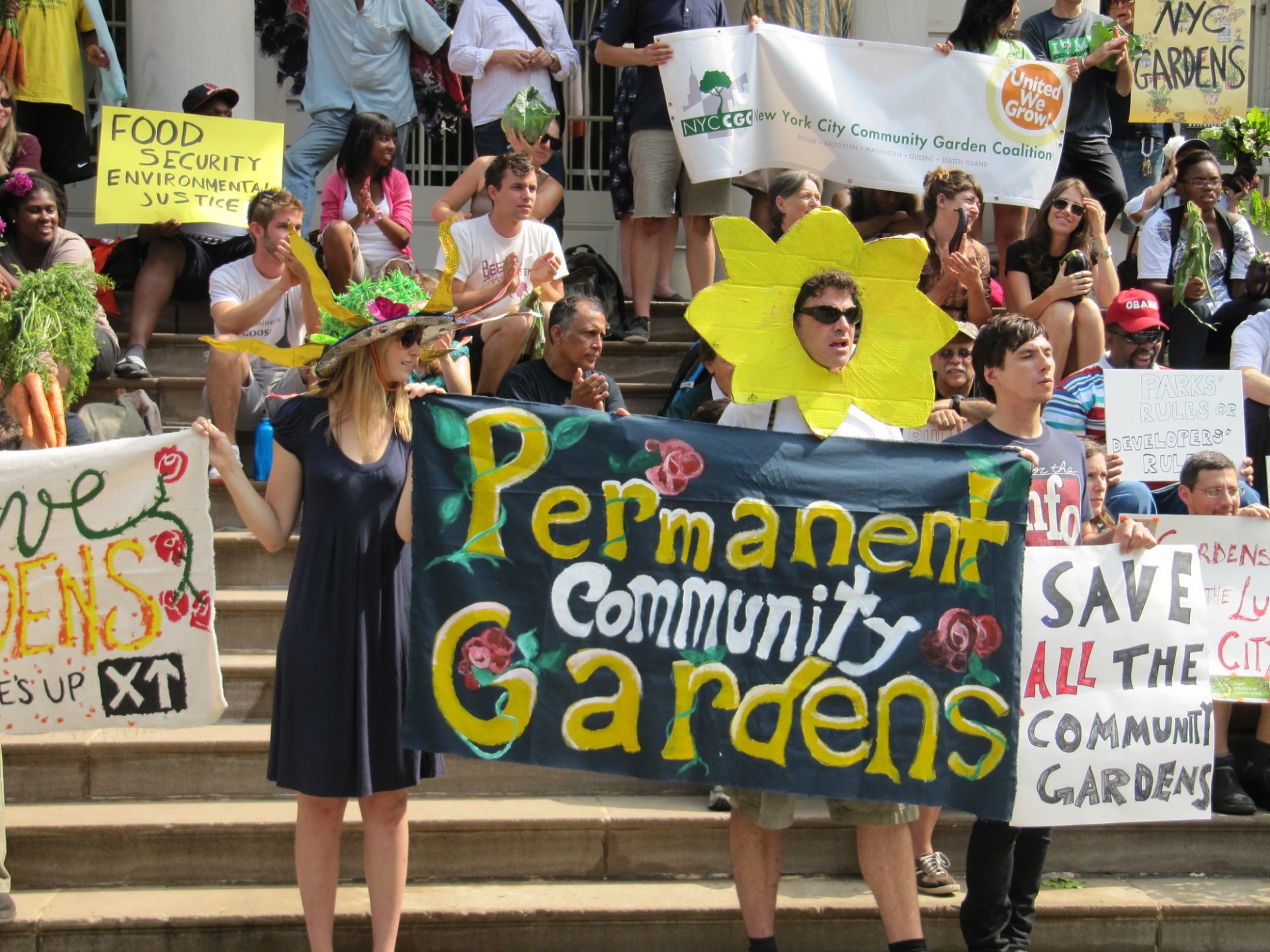A Secret Tool to Slow Climate Change in New York City

C+S 2020 students are blogging about topics that interest them for Applications in Climate and Society, a core spring class.
Over 1,200 gardens in New York City provide essential services to New Yorkers. Gardens are intimately tied to community development and are part of the city’s social fabric. Yet most garden lots are still considered “vacant lots” or temporary uses of urban space in official databases and policy.
The political situation is progressing, but community gardens need land rights. Recently, a new package of bills was introduced to address the role of community gardens in planning for New York City’s future.
Beyond their aesthetic value, community gardens provide social, economic and ecological benefits. Socially, gardens can be communal gathering sites, support mental and physical health, and encourage civic activism. Economically, people can earn extra income from selling produce or save money eating the produce grown in gardens.
Community gardens can increase the city’s resilience to climate change. However, they are a tool often forgotten by policymakers. As climate change intensifies, New York City will face rising temperatures, extreme heat events and hurricanes. Community gardens reduce the urban heat island effect by providing shading and absorbing solar radiation. Gardens can also help manage stormwater runoff; unlike asphalt, vegetation and soil in gardens can absorb and store rainwater. In addition, gardens can help capture carbon from the atmosphere.
Yet gardens face regulatory uncertainty. Currently, community gardens registered with the Parks Department’s GreenThumb program only have up to four-year leases. Thousands of grassroots organizers cultivated gardens across the five boroughs in the 1960s. But community gardens have faced opposition from the city government. For example, the Giuliani administration tried to destroy more than 100 gardens to make way for new development projects. In 2019, GreenThumb made changes to their licensing that endangered over 100 gardens. While gardeners see gardens as a lifelong and intergenerational project, policymakers have historically seen them as temporary uses of space.
However, views among policymakers may be changing. In August 2019, New York City Council Speaker Corey Johnson unveiled a package of bills and policies to address food insecurity. If codified, this would be the city’s first comprehensive food plan. Growing Food Equity in NYC has an entire section dedicated to community gardens.
Codifying the package of bills would make community gardens more permanent parts of the city’s fabric. Specifically, the City Council will consider legislation that requires the Parks Department “to collect and maintain metrics on the ecological, resiliency, educational, cultural, health, and community development value of community gardens throughout the city.”
It also declassifies community garden lots as vacant in official databases, so that developers refrain from examining lots for new projects. This part of the bill was passed by City Council earlier this year.
Climate change will require top-down and bottom-up approaches. Intergovernmental Panel on Climate Change experts have noted that most effective approaches involve community perspectives in decision-making processes. Community gardens are primarily driven by communities and grassroots organizing. Providing support and permanence to community gardens can be an effective strategy to empower local communities to fight against climate change.
To address the future, we should look to the past. Gardening in New York City dates back to the 1890s. During periods of economic or social uncertainty—the Panic of 1893, the Great Depression, World War I and II—governments used gardens as a tool to alleviate income loss and food insecurity and promote social cohesion. Gardens proliferated across U.S. cities during uncertain times.
Our current era is another period of social and economic uncertainty. Climate change policies should directly incorporate community gardens. Johnson’s plan is taking us in the right direction. Solving climate change requires everyone’s cooperation. To get that, officials will have to support community-led efforts.
